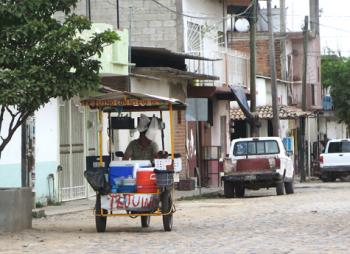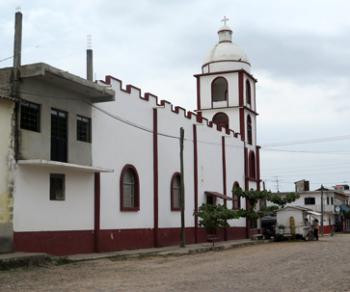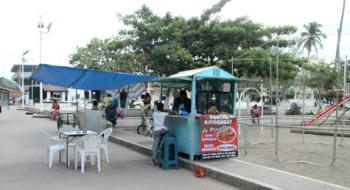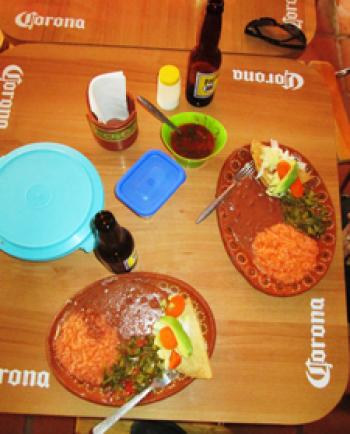The ‘real’ Mexico near Puerto Vallarta
This item appears on page 29 of the October 2017 issue.
Among the top attractions for many visitors to Puerto Vallarta, Mexico, are strolling along the colorful Malecón, exploring the town’s charming colonial center and basking in the beauty of the vast Banderas Bay and the lush, palm-covered mountains nearby.
Some people also check out places associated with Elizabeth Taylor and Richard Burton, who, in 1963, carried on a scandalous and highly publicized love affair during the filming of “The Night of the Iguana,” when both were married to other people. It was the attention paid to their relationship by the tabloid press that brought the world’s attention to the then-sleepy town and led to its transformation into a well-known vacation destination.
Far fewer travelers take the time or trouble to be introduced to places nearby that, in many ways, represent the “real” Mexico.
Because of their settings (adjacent to lovely beaches or perched in the verdant foothills of the Sierra Madre), several of these communities have been discovered by vacationers from other areas of Mexico and elsewhere. Yet even with the development that accompanies tourism, many retain the small-town ambiance and charm that make a visit there well worthwhile.
During our stay in Puerto Vallarta in January 2017, my wife, Fyllis, and I rented a car and headed out to explore several villages.
Our first stop was Ixtapa, just a 30-minute drive from our hotel in Puerto Vallarta. We were virtually alone as we strolled along the narrow, cobblestone streets.
The most action we saw was centered around the town square, which doubles as a children’s playground. A few adults were relaxing, some watching their youngsters at play. One customer waited to be served at a tiny food stand that had a single table and four chairs in front.
•
The town of Sayulita keeps one foot planted firmly in the culture and traditions of old Mexico while exhibiting touches of the present. Beneath its expanding, tourism-oriented infrastructure remain familiar touches of the way things were.
Sayulita was a tranquil fishing village until the mid-20th century, when surfers discovered it offers an inviting place to learn and practice their favorite activity. As the word spread, rental bungalows and small hotels sprang up.
The slowly increasing influx of visitors provided customers for restaurants, art galleries and shops. Those who craved outdoor experiences were tempted by opportunities for hiking, jungle-canopy tours, horseback riding and a variety of other leisure pursuits.
The town did not completely surrender its basic character. Buildings and cars along its three main streets are coated with a thin layer of dust. Roosters crow and chickens scratch in the dirt. Stores selling silver jewelry, handmade leather purses and other upscale wares stand near modest shops and stalls that offer hammocks, handwoven blankets and straw baskets.
After buying tasty coconut muffins and cups of excellent coffee, Fyllis and I settled down to observe the local life. Among the vignettes we saw were a man using a machete to trim the bushes around his house; street-food vendors dishing out empanadas, fried bananas and tacos; a woman using a plastic broom to sweep the sidewalk in front of her home, who accomplished little more than moving the dust around, and members of the Cora and Huichol indigenous ethnic groups subsisting by farming, raising cattle and selling their crafts.
•
The scene was different, but no less charming, in the third town we visited. Approaching Las Palmas, we soon realized that we were in horse country. We spotted several vans transporting horses, passed corrals in which the animals were grazing and came upon two men wearing typical cowboy attire riding their mounts along the dusty streets.
Those streets were so quiet, I told Fyllis a visitor could almost lie down and take a nap on them — something, in fact, that we saw several dogs do. Even though it was the height of tourist season, many of the smattering of stores and tiny eateries were closed. That resulted in the most meaningful and memorable experience of our sojourns.
Approaching two men seated outside of a house, one of whom was using a machete to cleave a melon in half, we used broken Spanish and hand gestures to ask if there was a restaurant nearby. The melon cleaver pointed to an open doorway across the street, where an elderly woman was seated watching a child, whom we assumed was her granddaughter, play.
After we communicated that we would like to get something to eat, she called out a name and the youngster’s mother appeared. She led us to a small kitchen, removed several containers of food from the refrigerator and uncovered earthenware bowls on a counter.
We pointed to what we wanted, asked for two cervezas (beers) and took seats at a rather rickety table on the porch behind the kitchen. In a few minutes, we were eating our fill of tortillas, refried beans, rice, string bean casserole and potato tostadas.
The food was excellent, the bill came to $12, and we had added to our list of activities that provided immersion into the “real” Mexico.
VICTOR BLOCK
Washington, D.C.




